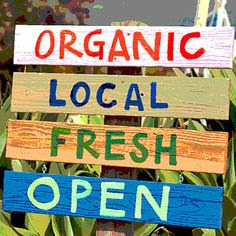Irrigation, Ecosystem Gardening and Trends
Irrigation is the method in which a controlled amount of water is supplied to plants at regular intervals for agriculture. It is used to assist in the growing of agricultural crops, maintenance of landscapes, and re-vegetation of disturbed soils in dry areas and during periods of inadequate rainfall.
An ecosystem is all of the plants, insects, and wildlife (all of the living things) that interact with all of the physical non-living things (soil, water, air, sunlight) that together create the environment that produces the ecosystem services on which we as humans are totally dependent.
These trends and innovations are redefining every aspect of gardening in the West—and changing the way we live, eat, and connect with one another. Garden and landscape designers across the country forecast noteworthy ideas shaping the gardening world in 2017
Trends
A good way to support local farmers who grow organically is
to use Community Supported Agriculture (CSA).
This works by having people in the community pay local farmers so that
they have enough start money to buy all the necessary equipment and supplies for
his garden. The people who pay get a
share of each harvest the farmer has that year.
It helps keep the farmer from having too much left over crops. This agreement keeps people from having to
start up and maintain their own personal garden. One of the most beneficial things about using
CSA is that it provides small to medium size farmers with a large portion of
their income, and it also keeps the money local to help with the local
economy. Most of these farmers grow
organically also, but not all of them do so it is important to ask first.
Food Sheds
In class one of the topics we talked about was foodsheds. I never heard the term foodshed until I was read about it for this class. A foodshed is a "geographic location that produces the food for a particular population." This encompasses everything from production to consumption, including logistics (farm to mouth). Foodshed covers the "flow" of the food. The foodshed is split into zones ONLY geographically and not politically. Counties and governments have nothing to do with the separation between zones. For example FL would be split into north, central, and south. In our case, South Florida, we have enough food on hand at any given time on average to last three days before needing to import anything.
Garden Techniques
I enjoyed learning about different gardening techniques and varies options for growing a garden and what trends are out there currently. The techniques that interested me were the basics to help and start a small garden at home. These topics were not particularly by main interest, but learning about gardening tool, trends and techniques, helped me engage in wanting to grow my own tree, plants and garden in my home.
Food Deserts
A food desert is an urban area in which it is difficult to buy affordable or good quality fresh food. Many people who live is big cities are unable to have access to local and fresh foods and many poor people live in food deserts. The more local cities have access to local foods and produce, they will sustain and help maintain a healthy and clean lifestyle. They will know what is GMO, what toxins they are putting on their bodies and ingesting. Consumers will also be able to afford local foods and is they are indeed organic, they will even pay a little more for their produce.

















































